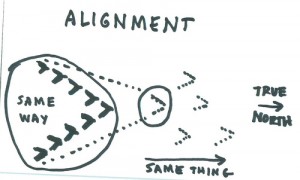Lead Liaison Launches Sales and Marketing University
 Allen, TX – Lead Liaison, a leading sales and marketing solutions provider, announced today the launch of their Sales and Marketing University. The learning platform is designed to be a streamlined source of information and education pertaining to the products and services offered by Lead Liaison. Plans have been established to include premium content from third parties as well. Over time the company will add valuable course content to help individuals and companies with general sales and marketing concepts, strategies, and core principles.
Allen, TX – Lead Liaison, a leading sales and marketing solutions provider, announced today the launch of their Sales and Marketing University. The learning platform is designed to be a streamlined source of information and education pertaining to the products and services offered by Lead Liaison. Plans have been established to include premium content from third parties as well. Over time the company will add valuable course content to help individuals and companies with general sales and marketing concepts, strategies, and core principles.
An overwhelming increase in new customers and general demand pushed Lead Liaison in the direction to create a way for their clients to learn more, faster. The University is intended to be a very broad marketplace for learning; a central repository for premium sales and marketing content.
Lead Liaison’s Sales and Marketing University awards certifications and badges as each course is mastered. It also hosts training videos for students to learn at their own pace and provides students with the tools they need to become proficient in their marketing and sales solutions.
“Our company was granted early access to Lead Liaison’s Sales and Marketing University,” says Crystal Berry, Marketing Manager at Validis. “There is so much helpful information! I plan on having both our sales and marketing teams collect certifications in all courses. I’ve communicated with our CEO that the sales team getting certified in marketing and sales automation is a value add for them. We could all benefit from knowing more about how to be more effective and efficient with our sales and marketing efforts.”
In addition to receiving access to Lead Liaison’s world-class education resources, the Sales and Marketing University has also been included with the company’s onboarding services. This integration helps introduce new customers to Lead Liaison’s capabilities by showing them the services available and ensuring that their experience is as simple and streamlined as possible.
To learn more about Lead Liaison’s Sales and Marketing University, visit https://university.leadliaison.com/.
About Lead Liaison
Lead Liaison provides cloud-based sales and marketing automation solutions that helps businesses accelerate revenue by attracting, converting, closing and retaining more prospects. Filling a void in the small pool of marketing automation providers that focus on marketing-centric functionality, Lead Liaison gives equal focus to sales providing sophisticated visitor tracking and additional website engagement tools to boost sales effectiveness. Lead Liaison blends ease-of-use, a flexible business model, deep external integration, marketing across social, web, mobile, email and offline channels and powerful functionality, all specifically tailored for mid-sized businesses, into a single platform, called Revenue Generation Software®. Lead Liaison is headquartered in Allen, Texas, near Dallas. For more information, visit http://www.leadliaison.com or call 1-800-89-LEADS (895-3237).











